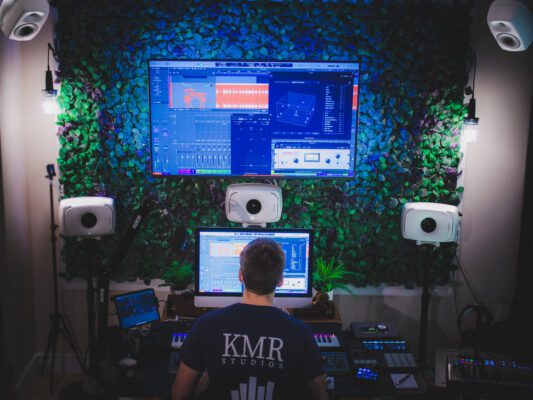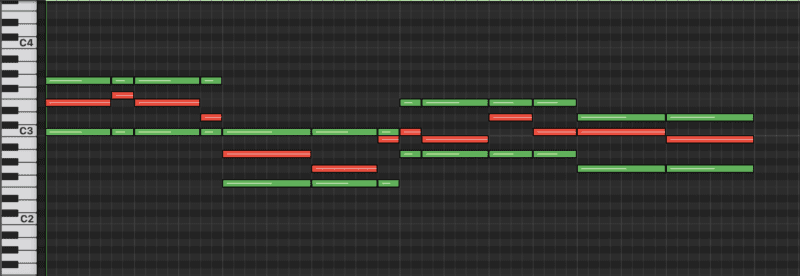A cover is a song that is performed or recorded by a different artist that the one that originally wrote the song. A remix uses an existing recording to re-edit it into another work. Releasing a cover or remix is a great way to gain more experience in making music and to introduce yourself to an already established audience. In this article you will find some information on how you can release music that also makes use of someone’s else work.
How to release a cover song
Unlike commonly thought, to release a cover you generally do not need permission of the original artist. This is due to something called “compulsory licensing”. This states that the owner of the song cannot deny the release of a cover song. However, you do need to obtain a license to stream and sell your cover.
Other important things to note:
-
- In general, the original song needs to have been released commercially.
- A cover actually needs to be a cover. This means that the lyrics amongst other elements, cannot be changed. If you want to sample or remix a song, different rules usually apply.
- Some songs may already be public domain, meaning you don’t need a license.
Obtaining a license
There are different options for obtaining a license, depending on how and where you plan to release your cover.
Firstly, it depends on how you want to release your cover:
To sell your cover:
To release your cover in online stores for digital downloads or in a physical format, you need a mechanical license. This can be obtained either by contacting the copyright holders directly or by using services such as SongFile. This is also dependent on the region. For example, for the United States, this can be done through the Harry Fox Agency.
For streaming services:
To distribute your cover to streaming services such as Spotify and Apple Music, it is likely that you end up using an online distributor such as Distrokid, CDBaby, or Tunecore. They usually offer the option to mark your release as a cover for which they then acquire the right license for a fee. It is also possible to obtain your own license independent from a distributor through websites such as EasySong and Soundrop.
Secondly, it depends on where you want to release it:
Several regions demand licenses:
-
- The United States
- Canada
- Mexico
- Pakistan
- India
However, some streaming services such as Spotify, Deezer, Pandora, iHeartRadio, Saavn, Nuuday, Anghami, Tidal, and KKBox might pay for their own licenses for cover songs. If you plan to only release the cover there, you don’t need a license.
What about a translated cover?
When you want to release a cover the includes translated lyrics, for example from English to Swedish, the process is different. A translation of a song is namely a type of derivative work. This refers to creative works that take pre-existing material to create a new recording or composition. Sampling, remixes and mashups are also included in this category. Since the content is changed and the meaning of the song might have changed, you require permission from the original copyright holders and must contact them or their representatives directly. This can be done by locating who the copyright holders are (f.e. credits on Spotify) and contacting them or by going through a collection society.
Release a cover through Distrokid
Distrokid is one of the most used online music distributors in the world. One of the services that can be included when releasing through them is the obtainment of a license for your cover song. They charge a $12 annual fee to obtain this license. When uploading your song to Distrokid, simply mark the checkbox that states the song is a cover as opposed to an original song.
Distrokid specifies that even though you might already have obtained a (mechanical) license of your own, when uploading to Distrokid, you must opt for their annually fee. This is so they can ensure that the artist of the original song is paid their share.
Find more information for uploading a song to Distrokid and what you can or can’t upload here.
For a discount on your Distrokid subscription use this link!
How to release a remix
Unlike a cover, which is a re-creation of a work, remixes are re-edited versions of an already existing recording. Both are considered derivative works. So, similarly to a translated cover, for remixes you also need direct permission from the ones that hold the copyright of the original song, or a so called master use license. This is different to the license that is needed when releasing a cover. This is because both types of copyrights for a song are involved:
-
- the master recording
- the song copyright (composition and lyrics)
To be able to take someone’s work and remix it, it is important to get an agreement from the original artist or their representatives on under which conditions their recording can be used and released. Again, his can be done by locating who the copyright holders are (f.e. credits on Spotify) and contacting them or by going through a collection society.
Royalties splits
The royalties from a cover (or a remix) will be split between all those involved in the work, so the original artist, a music publisher and you, but it all depends on the agreement that was made between the parties. One of the most important parts is to get everything in writing. Whether this is with a big record label or with a friend you decided to collaborate with. To ensure you receive the right payments, you also want to be registered at the right collection societies, such as ASCAP (USA) or STIM (Sweden).
More often, however, a “buy-out” of “flat fee” is applicable to remixes. This means that the remixer will receive a one-time payment for their work (work for hire basis) and no further ongoing royalties. Again, this is all dependent on the agreement made between parties.
KMR Studios can help with recording and releasing your cover
Read more articles about distribution
What is a clipper?
Have you started out in the world of mixing and mastering and just came across [...]
5 Clippers taking your mix to new heights
Are you not sure what Clipper to use when mixing and mastering your music? We [...]
Mastering Vocal Harmonies
Read more about what strategies you could use to learn more about, and eventually master, [...]
Export master files from Atmos projects in Logic Pro
This article gives you detailed information on how to export master files from Logic Pro [...]
Contact us

CONTACT US
OUR PORTFOLIO
Over the past few years, KMR Studios has released hundreds of songs by a wide range of artists. To make it easier for you to find what you’re looking for, we’ve organized the music into various playlists. Click the link below to explore our music by format (stereo or Dolby Atmos) or genre.
Portfolio
 Svenska
Svenska







